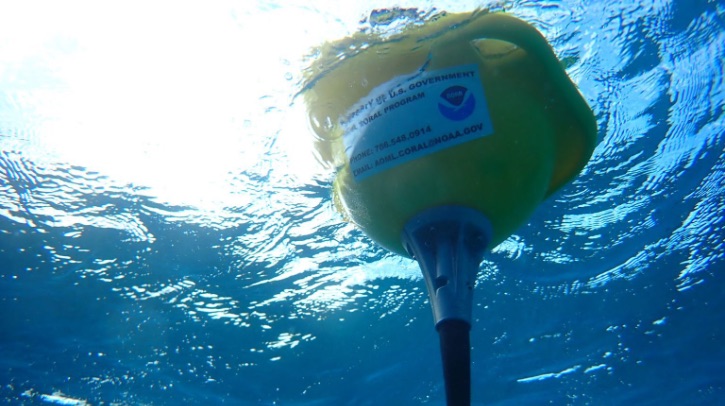The Sofar buoy measures wave energy, wind speed, sea surface temperature and pressure at the surface. Below the surface, integrated sensors measure pH and seafloor temperature in near-real time – actively monitoring ocean acidification on crucial reefs.
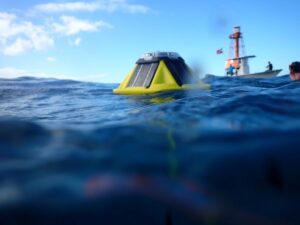
Ocean acidification research
Global ocean acidification (OA) is affecting the integrity and hard, calcium carbonate structure that comprises entire coral reefs. The decrease in pH across marine ecosystems due to the ocean’s increasing uptake of atmospheric carbon dioxide accelerates the erosion of reefs and decreases their ability to grow (i.e. calcify). Together, these threats contribute to loss of crucial habitat that provide shelter to the highest concentration of marine biodiversity.
The global impacts of ocean acidification are well known. However, a decade-long study led by scientists at AOML revealed last year that there are spatial gradients in how OA progresses across the Florida Keys, and some sites in the Upper Keys may act as refugia able to mitigate a decrease in pH – potentially due to the higher abundance of seagrass beds and other benthic communities.
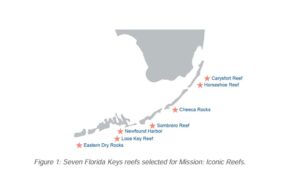
The Florida Keys National Marine Sanctuary consists of 350 miles of the only North American barrier reef – the Florida Coral Reef – stretching from the Dry Tortugas to Port St. Lucie. An estimated five million visitors travel to the Florida Keys every year where 54% of jobs are tied directly to the marine ecosystems – along with billions in economic contributions to the state of Florida from tourism alone.
The joint-agency, NOAA-wide project Mission: Iconic Reefs was launched in 2019 to restore seven strategically selected reefs covering 3,000,000ft2 within the Florida Keys to self-sustaining levels over 20 years. However, as ocean acidification and other environmental stressors threaten this crucial ecosystem, the need to monitor changing ocean conditions becomes more essential.
“We needed a new, cost-effective way to accurately monitor ocean acidification in real time”
Ian Enochs, PhD, principal investigator of AOML’s Coral Program
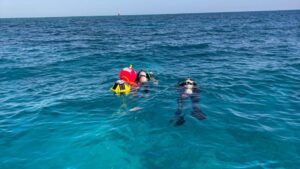
Advancing data collection methodologies
Collecting and transmitting data below the surface has always been a challenge. Current methodologies are often limited by labor-intensive deployments, requiring heavy machinery, highly trained personnel and larger vessels, resulting in costly and time-consuming field operations. Additionally, many existing systems rely on satellite-based data transmission, which, due to cost constraints, often sends data at longer intervals to minimize expenses. This delay in transmission impacts data availability and resolution, limiting the ability to monitor rapid environmental changes in real time.
Investigating conditions on coral reefs below the surface usually depended on field operations, deployable instrumentation and seawater sampling complicated by weather conditions, costs and potential data loss due to unmonitored instrumentation. Satellites provide high-resolution observations of ocean conditions in near-real time – but they can’t see below the surface or provide information on the environmental conditions the reefs are experiencing, specifically key environmental factors affecting reef growth, such as pH.
With these Sofar buoys and a newly-developed online application, scientists with AOML’s Coral Program are now actively seeing how conditions fluctuate and monitoring instrument functionality in real time at four of the seven Mission: Iconic Reefs: Carysfort, Horseshoe, Cheeca Rocks and Sombrero Reefs.
“With this new system, we can detect issues
when they happen, so we can ensure instrument performance and respond accordingly”
Ian Enochs, PhD, principal investigator of AOML’s coral program
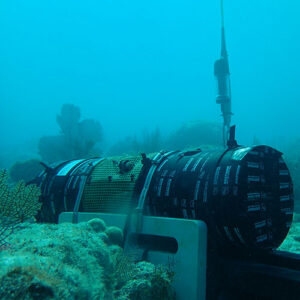
Made to measure
However, one specific advantage presented by the Sofar Spotter buoy for the team is that it enables the custom integration of an advanced sensor monitoring changes in pH across these reefs.
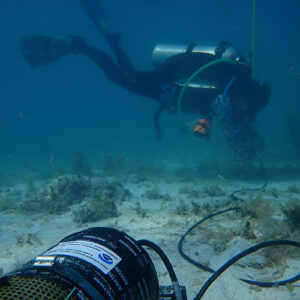
While probes and pH electrodes are often strapped to buoys and other deployable instrumentation in the marine environment, the sensors may not be of sufficient quality to monitor the gradual progression of OA and over time they degrade, leading to drifting data that can compromise a monitoring program Scientists with AOML’s coral program have taken a different approach.
Integrating a Sami-pH logger at the base of each buoy, the team uses a colorometric system where seawater enters the device – comprising micro pumps, injector valves and reactor cells – and undergoes a chemical reaction when exposed to reagents.
This reaction changes the water’s color. A change that the Sami-pH measures and quantifies as a pH reading, it is sent via the cable to the buoy and over satellite or cellular to the coral program’s online application, providing a high-resolution pH measurement of a reef in near-real time.
With the Sami-pH’s ability to perform this process consistently for up to six months without maintenance, the coral program can more accurately monitor whether coral reefs are exposed to more acidic (i.e. lower pH) waters.
“The durable and easily customizable design of these buoys allows for easy deployment in a variety of environments. It’s amazing not only being able to see what is happening on the reef in real time, but also being able to make sure all instruments are working properly and providing a continuous dataset”
Taylor Gill, AOML coral program’s Mission Iconic Reef environmental monitoring coordinator
Weathering the storm
As hurricanes, tropical storms and severe weather brush the Florida Keys, scientists at AOML will also be able to see how these storms influence coral reefs as they hit – and whether they provide relief when water temperatures are peaking or exacerbate the impacts of other stressors.
Ultimately, deploying these novel integrated systems is the beginning of an easily scalable solution to monitor marine environments and fill gaps in ocean acidification research by providing better data collection both spatially and temporally.
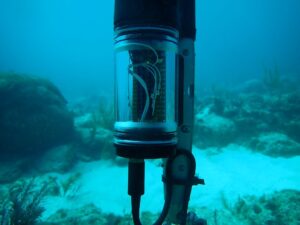
As part of the large-scale Mission: Iconic Reefs restoration effort, comprising various multiple groups implementing different stages of restoration, AOML’s coral program oversees the environmental monitoring initiative. However, understanding the environmental conditions at these reefs in real time and managing instrument functionality will also help scientists at AOML build on crucial ongoing experiments that seek to enhance coral resiliency.
In related news, NOAA’s National Ocean Service (NOS) recently released the first modeled, historical water level and wave dataset for the Atlantic, Caribbean and Gulf coasts. This new comprehensive dataset – known as Coastal Ocean Reanalysis (CORA) – is expected to help improve flood mitigation tools and flood-risk assessment. Click here to read the full story.


